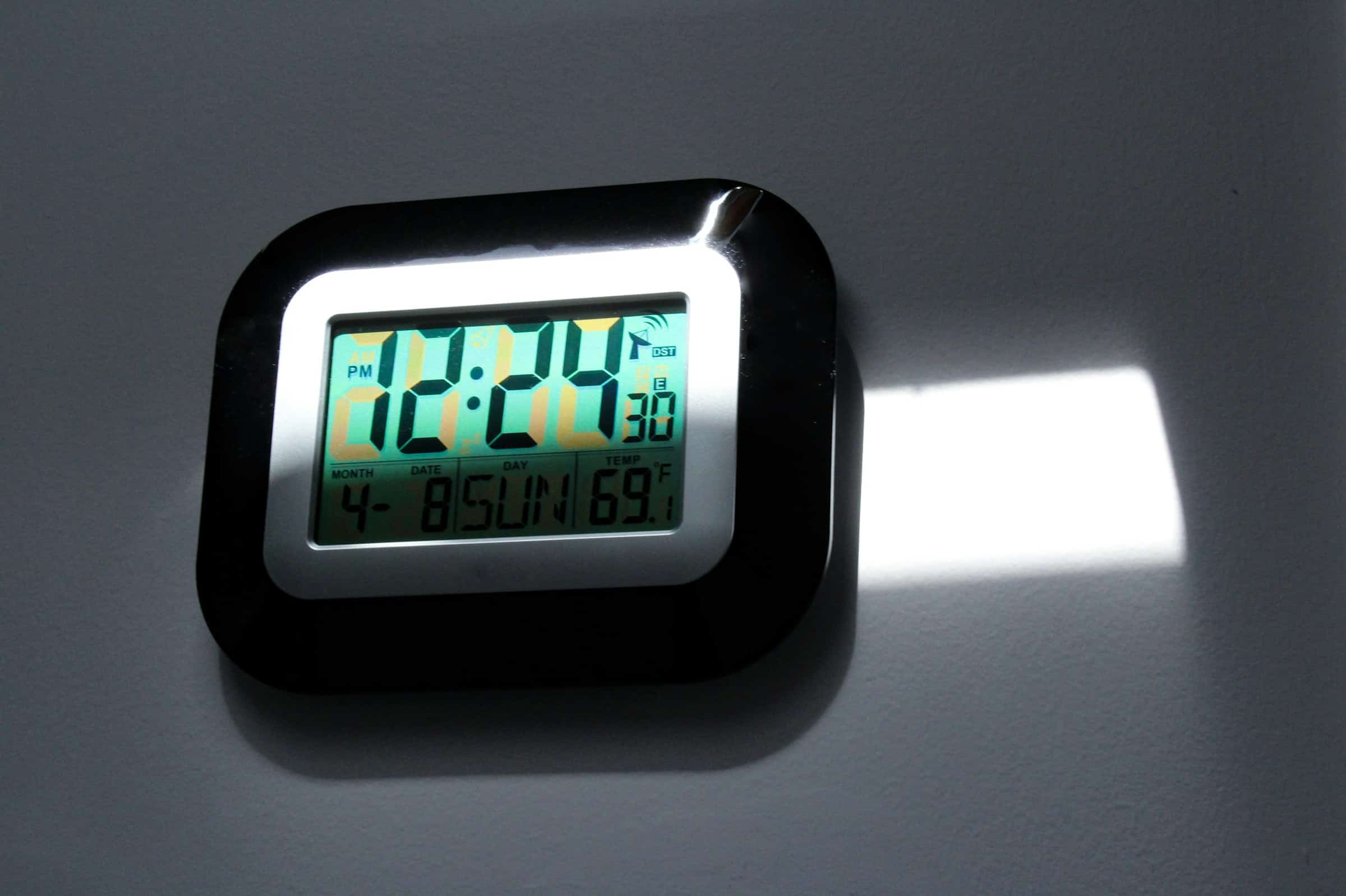What Are the Best Techniques for Using Your Smartphone to Control a Smart Alarm Clock?

In the age of smart devices, controlling your alarm clock has become a sophisticated blend of technology and convenience. No longer do you have to rely on a simple alarm clock to wake up; now, your smartphone can sync with various smart alarms to ensure you wake up not just on time, but also in the best possible way. Here, we delve into the best techniques for using your smartphone to control a smart alarm clock, covering both Android and iPhone devices.
Setting Up Your Smart Alarm Clock
To begin, setting up a smart alarm clock involves more than just plugging it in and setting the time. Whether you're using an Android phone or an iPhone, the initial setup and configuration are crucial for an optimal experience.
Avez-vous vu cela : What Are the Effective Methods for Using Your Smartphone as a Smart Home Control Center?
Modern smart alarm clocks like the Nest Hub or smart clocks with Google Assistant require you to first download the corresponding clock app on your device. This clock app will typically guide you through the setup process. Once you open the app, it will prompt you to connect your alarm clock to your home Wi-Fi network. Make sure your smartphone is connected to the same network to facilitate a smooth pairing.
After pairing your smart alarm clock with your phone, proceed to the settings menu in the clock app. Here, you can customize various aspects of your alarm such as the alarm sound, volume, and even the light intensity for alarms that feature built-in lights.
A lire aussi : How to Set Up and Use Contactless Payment Systems on Your Smartphone?
For those using an Android phone, Google's Clock app offers seamless integration with Google Assistant, allowing you to set alarms using voice commands. Simply say, "Hey Google, set an alarm for 7 AM," and Google Assistant will do the rest. Similarly, if you use an iPhone, you can utilize Siri to set alarms by saying, "Hey Siri, set an alarm for 7 AM."
Remember to enable standby mode on your phone during the night to conserve battery and prevent unnecessary distractions. This will help your phone focus on its primary task: making sure you wake up on time.
Utilizing Sleep Tracking Features
Sleep tracking is another advanced feature offered by many smart alarm clocks and clock apps. This allows you to monitor your sleep cycle and wake up feeling refreshed.
Using sleep tracking, your smart alarm clock can detect the optimal time to wake you up based on your sleep cycle. This is more effective than traditional alarms as it wakes you up during the lightest phase of your sleep, reducing grogginess. Most smart alarms, like those found in the Google Nest Hub, use sensors and algorithms to track your sleep patterns.
To activate sleep tracking, you need to enable the feature within the clock app on your smartphone. For Android users, apps like Sleep as Android offer detailed sleep tracking and smart alarm functionalities. On your iPhone, you can use the built-in Health app or third-party apps like Sleep Cycle.
It is crucial to place your phone close to your bed, preferably on your nightstand, to ensure accurate sleep tracking. Some smart clocks also come with wearables or accessories that can be worn to bed, providing even more precise data.
In addition, these apps often offer a sleep score, which gives you insight into the quality of your sleep. By analyzing this data, you can adjust your bedtime routine to improve your overall sleep health. For instance, you may find that you get better sleep by reducing screen time before bed or maintaining a consistent sleep schedule.
By combining sleep tracking with the smart alarm features of your device, you gain a comprehensive understanding of your sleep patterns and can make informed decisions to enhance your rest and wake up more naturally.
Integrating Smart Home Devices
Smart alarm clocks are no longer just standalone devices; they are part of an interconnected ecosystem of smart home devices. Integrating your smart alarm clock with other smart devices can enhance its functionality and provide a seamless waking experience.
For instance, if you use a Nest Hub, you can link it with other Google Assistant-enabled devices in your home. This allows you to perform multiple tasks with a single command. You might say, "Hey Google, good morning," and your alarm clock will turn off, your smart lights will turn on, your thermostat will adjust to a comfortable temperature, and your coffee maker will start brewing.
Similarly, if you have a smart alarm clock compatible with Apple HomeKit, you can create automations that work with Siri. For example, saying "Hey Siri, good night" could set your alarm, dim your lights, lock your doors, and adjust your thermostat.
To achieve this integration, you need to configure routines and automations within your smart home app, whether it’s Google Home, Apple Home, or another platform like SmartThings. These apps allow you to create custom scenarios tailored to your preferences, enhancing your overall smart home experience.
Moreover, some advanced smart alarm clocks come with built-in features such as sleep sounds or white noise generators. These can be controlled via your smartphone to help you fall asleep more quickly and peacefully.
By leveraging the interconnected capabilities of your smart devices, you can transform your bedroom into a smart sleep sanctuary, optimizing both your wake-up and bedtime routines for better overall sleep health.
Customizing Your Alarm Settings
Customization is key to making the most out of your smart alarm clock. With a plethora of options available, you can tweak your alarm settings to suit your unique needs and preferences.
Firstly, consider the alarm tones. Traditional alarm clocks offer a limited number of sounds, but smart alarm clocks and clock apps provide a wide variety of tones, from nature sounds to your favorite songs. On your Android phone, you can use the Google Clock app to select a song from your music library as your alarm tone. Similarly, on your iPhone, the built-in Clock app lets you choose from a range of sounds or even your favorite tune from Apple Music.
Volume control is another crucial aspect. You may prefer your alarm to start softly and gradually increase in volume, a feature known as a gentle wake-up. This can be especially beneficial if you share your bedroom with a partner who wakes up at a different time.
Additionally, smart alarm clocks often come with customizable snooze options. You can set the snooze duration to match your preference, whether it’s a quick five-minute snooze or a more extended ten-minute break.
For those who struggle with waking up in the dark, smart alarms with light features are a game changer. These alarms simulate a sunrise to wake you up naturally by gradually increasing the light intensity in your room. You can control these light settings directly from your smartphone, adjusting the brightness and color temperature to your taste.
Lastly, consider setting multiple alarms. If you have a complex schedule, setting multiple alarms can help you manage your time better. You can assign different alarm tones and labels for different events, ensuring you never miss an important appointment or meeting.
By customizing your alarm settings, you can create a wake-up experience that is both pleasant and efficient, tailored specifically to your lifestyle.
Leveraging Voice Assistants
Voice assistants have revolutionized the way we interact with our smart devices, and using them to control your smart alarm clock is no exception. Whether you use Google Assistant on an Android phone or Siri on an iPhone, leveraging voice commands can make setting and managing alarms easier and more intuitive.
With Google Assistant, you can use your Android phone to set and manage alarms effortlessly. Simply say, "Hey Google, set an alarm for 6 AM," and your assistant will handle the rest. You can also manage your alarms by saying, "Hey Google, what alarms are set?" to review your current alarms or "Hey Google, cancel my 6 AM alarm" to delete an alarm.
For iPhone users, Siri offers similar functionalities. You can set alarms by saying, "Hey Siri, set an alarm for 7 AM," or manage multiple alarms with commands like "Hey Siri, what alarms do I have?" and "Hey Siri, delete my 7 AM alarm."
Voice assistants also allow for more advanced control over your smart alarm clock. For instance, you can ask your assistant to set recurring alarms for specific days, making it easier to manage your weekly schedule. Commands like "Hey Google, set an alarm for 6 AM every weekday" or "Hey Siri, set a weekend alarm for 8 AM" can automate your wake-up routine.
Moreover, integrating your smart alarm clock with other smart devices through voice assistants can enhance your morning routine. You can create routines that not only turn off your alarm but also perform other tasks, such as adjusting your thermostat, turning on the lights, or providing you with a weather update.
By fully utilizing the capabilities of voice assistants, you can simplify the management of your alarms and integrate them seamlessly into your daily routines, making your mornings smoother and more efficient.
Modern technology has significantly improved the way we wake up, with smart alarm clocks and smartphones offering a plethora of customization and integration options. From the initial setup of your smart alarm clock to leveraging sleep tracking features, integrating smart home devices, customizing your alarm settings, and utilizing voice assistants, you can create a personalized and efficient wake-up experience.
By following these techniques, you can ensure that you wake up on time and in the most pleasant way possible, making your mornings smoother and setting a positive tone for your day. Embrace the power of your smartphone and smart alarm clock to enhance your sleep and wake-up routine, leading to better overall sleep health and a more productive life.
